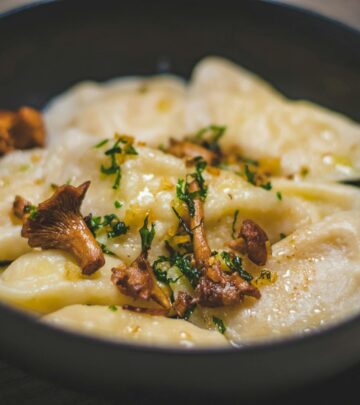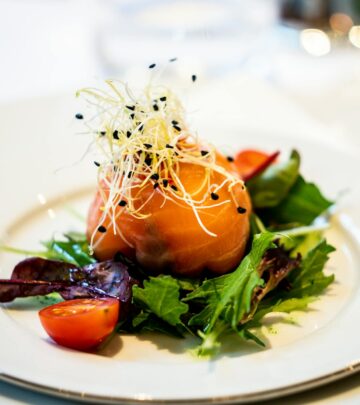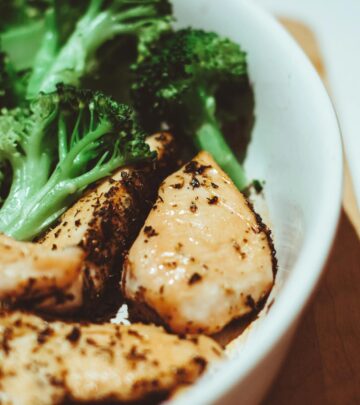Chop Suey Recipe: Authentic Asian Stir-Fry In Under 30 Minutes
Master this simple yet flavorful Asian-American staple with our easy-to-follow recipe

Classic Chop Suey: A Delicious Asian-Inspired Comfort Dish
Chop suey has long been a staple in American-Chinese cuisine, offering a delicious blend of meat, vegetables, and a savory sauce that perfectly complements steamed rice. This versatile dish originated as a way to use up leftover ingredients, creating something both economical and satisfying. Our traditional chop suey recipe features tender pork and crisp vegetables in a light yet flavorful sauce that will transport your taste buds to your favorite Chinese restaurant.
While many variations exist across different regions, this classic preparation remains true to the dish’s humble origins while delivering exceptional flavor. Whether you’re cooking for your family on a busy weeknight or looking to expand your culinary repertoire, this chop suey recipe is sure to become a regular in your meal rotation.
What Is Chop Suey?
Chop suey is a dish that emerged from Chinese-American communities in the 19th century. The name “chop suey” comes from a Cantonese phrase that roughly translates to “assorted pieces” or “odds and ends,” reflecting its origins as a creative way to use various ingredients. While often confused with chow mein, chop suey typically contains a more diverse mixture of vegetables and is served with rice rather than noodles.
Traditional chop suey consists of meat (commonly pork, chicken, or beef) stir-fried with vegetables such as celery, onions, and bean sprouts in a light sauce thickened with cornstarch. The beauty of chop suey lies in its adaptability—you can easily customize it based on your preferences or the ingredients you have on hand.
Why You’ll Love This Chop Suey Recipe
This chop suey recipe stands out for several compelling reasons that make it worth adding to your cooking repertoire:
- Quick preparation: From start to finish, this dish comes together in less than 30 minutes, making it perfect for busy weeknights.
- Balanced nutrition: With protein from pork and plenty of vegetables, this dish provides a well-rounded meal in a single pan.
- Versatility: The recipe can be easily adapted to use different meats or vegetables based on your preferences or what’s available in your kitchen.
- Authentic flavor: Simple ingredients come together to create that distinctive chop suey taste that rivals any restaurant version.
- Family-friendly: The mild flavors appeal to diners of all ages, making this dish a reliable crowd-pleaser.
Ingredients for Perfect Chop Suey
This classic chop suey recipe calls for simple ingredients that blend together for a flavorful result. Here’s what you’ll need to serve four people:
For the Main Dish:
- ¼ cup shortening (or vegetable oil for a modern alternative)
- 1½ cups diced pork loin, cut into bite-sized pieces
- 1 cup diced onion (about 1 medium onion)
- 1 cup diced celery (about 2-3 stalks)
- 1 cup hot water
- 1 teaspoon salt
- ⅛ teaspoon ground black pepper
- 1 (14.5 ounce) can bean sprouts, drained and rinsed
For the Sauce:
- ⅓ cup cold water
- 2 tablespoons cornstarch
- 2 teaspoons soy sauce
- 1 teaspoon white sugar
Optional Additions:
While not included in the traditional recipe, many home cooks enhance their chop suey with additional ingredients such as:
- 1 can water chestnuts, sliced
- 1 can baby corn, drained
- 1 cup sliced mushrooms
- 1 bell pepper, julienned
- 2 cloves garlic, minced
- 1 tablespoon fresh ginger, grated
Kitchen Equipment Needed
One of the advantages of making chop suey is that it requires minimal equipment. Here’s what you’ll need:
- Large, deep skillet or wok
- Sharp knife for dicing ingredients
- Cutting board
- Measuring cups and spoons
- Small bowl for mixing sauce ingredients
- Wooden spoon or spatula for stirring
- Can opener (for bean sprouts)
Step-by-Step Cooking Instructions
Follow these simple steps to create a delicious chop suey that will satisfy your craving for Asian-inspired comfort food:
Preparation Phase
- Gather ingredients: Before beginning, measure and prepare all ingredients. This includes dicing the pork, onion, and celery, and draining and rinsing the bean sprouts. Having everything ready will make the cooking process much smoother, as this dish comes together quickly once you start cooking.
Cooking the Meat
- Heat the pan: Place a large, deep skillet over medium-high heat and add the shortening or oil. Allow it to heat until it shimmers but doesn’t smoke.
- Sear the pork: Add the diced pork loin to the hot pan. Stir occasionally until the meat turns white on all sides, about 2-3 minutes. This step is crucial for developing flavor and ensuring food safety.
Adding Vegetables
- Cook the onions: Add the diced onion to the pan with the seared pork. Sauté for approximately 5 minutes, or until the onions become translucent and slightly softened.
- Incorporate celery and seasonings: Stir in the diced celery, hot water, salt, and pepper. Cover the skillet with a lid and reduce heat to medium-low. Allow the mixture to simmer for 5 minutes, which will help soften the celery while infusing it with flavor.
- Add bean sprouts: Introduce the drained and rinsed bean sprouts to the skillet. Increase the heat and bring the entire mixture to a boil. The bean sprouts add a delightful crunch and are essential to authentic chop suey.
Creating and Adding the Sauce
- Prepare the sauce: While the vegetable mixture is coming to a boil, combine cold water, cornstarch, soy sauce, and sugar in a small bowl. Whisk thoroughly to ensure there are no lumps in the cornstarch.
- Thicken the dish: Once the vegetable mixture is boiling, slowly pour in the cornstarch slurry while stirring constantly. Continue cooking for about 5 minutes, or until the sauce reaches your desired consistency. The sauce should coat the back of a spoon but still remain somewhat light rather than gloopy.
Final Touches
- Taste and adjust: Sample the chop suey and adjust seasonings if necessary. You may want to add a bit more soy sauce for saltiness or a dash more sugar to balance flavors.
- Serve immediately: Chop suey is best enjoyed hot, directly after cooking. Serve over steamed white rice for an authentic experience.
Serving Suggestions
Chop suey shines as the star of a meal but pairs beautifully with complementary sides. Here are some serving suggestions to create a complete dining experience:
- Steamed white rice: The traditional accompaniment that allows the flavors of the chop suey to take center stage.
- Fried rice: For a more substantial meal, serve with fried rice instead of steamed.
- Spring rolls or egg rolls: These crispy appetizers provide a delightful textural contrast.
- Hot and sour soup: Start your meal with this classic soup for a true Chinese restaurant experience at home.
- Fortune cookies: Complete your homemade Chinese feast with these fun dessert cookies.
Recipe Variations
One of the beauties of chop suey is its adaptability. Here are some popular variations to consider:
Protein Alternatives
- Chicken Chop Suey: Substitute diced chicken thighs or breasts for the pork. Cook until the chicken is no longer pink in the center.
- Beef Chop Suey: Use thinly sliced beef instead of pork. The cooking time may need to be adjusted depending on the cut used.
- Vegetarian Chop Suey: Omit the meat entirely and increase the variety of vegetables. Consider adding firm tofu for protein.
- Seafood Chop Suey: Add shrimp, scallops, or a combination of seafood for a delicious twist. Be careful not to overcook seafood.
Vegetable Variations
Feel free to customize the vegetable composition based on personal preference or seasonal availability:
- Water chestnuts: Add a can of sliced water chestnuts for extra crunch.
- Baby corn: Include a can of baby corn for sweetness and visual appeal.
- Snow peas or sugar snap peas: These add color, crunch, and nutritional value.
- Bok choy: This Chinese cabbage adds authentic flavor and a pleasant texture.
- Mushrooms: Shiitake, button, or oyster mushrooms contribute an earthy dimension.
- Bell peppers: Red, green, or yellow peppers add color and a sweet crunch.
Sauce Modifications
- Spicy Chop Suey: Add sriracha, chili oil, or red pepper flakes to the sauce for heat.
- Garlic-Ginger Base: Start by sautéing minced garlic and grated ginger before adding the meat for more aromatic depth.
- Oyster Sauce Addition: Replace half the soy sauce with oyster sauce for a richer umami flavor.
- Sesame Finish: Drizzle with a small amount of sesame oil and sprinkle with toasted sesame seeds before serving.
Storage and Reheating Tips
Chop suey makes excellent leftovers. Here’s how to properly store and reheat your dish:
Refrigeration
Allow the chop suey to cool completely before transferring to airtight containers. Properly stored, it will keep in the refrigerator for 3-4 days. For best results, store the chop suey separately from rice to prevent the rice from absorbing too much moisture.
Freezing
While chop suey can be frozen, the texture of the vegetables, particularly the bean sprouts, may change upon thawing. If you choose to freeze, store in freezer-safe containers for up to 2 months. Thaw overnight in the refrigerator before reheating.
Reheating Methods
- Stovetop: The preferred method. Warm in a skillet over medium heat, stirring occasionally and adding a splash of water if needed to loosen the sauce.
- Microwave: Place a portion in a microwave-safe dish, cover loosely, and heat on medium power in 1-minute intervals, stirring between each, until heated through.
- Oven: Transfer to an oven-safe dish, cover with foil, and heat at 325°F for about 15 minutes or until hot throughout.
Nutritional Information
Chop suey offers a relatively balanced nutritional profile. Here’s an approximate breakdown per serving (without rice) based on the traditional recipe:
- Calories: 250-300 kcal
- Protein: 18-22g
- Carbohydrates: 12-15g
- Dietary Fiber: 3-4g
- Sugars: 4-5g
- Fat: 15-18g
- Sodium: 800-1000mg
The nutritional content can vary based on specific ingredients and portions. To reduce fat content, consider using less shortening or substituting with a heart-healthy oil.
Frequently Asked Questions (FAQs)
Q: What’s the difference between chop suey and chow mein?
A: While both are Chinese-American dishes featuring stir-fried meat and vegetables, chop suey is typically served over rice, while chow mein includes noodles. Chop suey also tends to have a lighter sauce compared to chow mein’s thicker gravy.
Q: Can I make chop suey ahead of time?
A: Yes, you can prepare chop suey 1-2 days in advance. However, the vegetables may lose some of their crispness. For best results, consider preparing the meat and sauce ahead of time, then adding fresh vegetables just before serving.
Q: Is chop suey actually Chinese?
A: Chop suey is considered Chinese-American cuisine. While it has roots in Cantonese cooking, the dish as we know it today was developed by Chinese immigrants in America during the 19th century.
Q: Can I use fresh bean sprouts instead of canned?
A: Absolutely! Fresh bean sprouts are preferable if available. Add them toward the end of the cooking process and cook just until slightly wilted to maintain their crunch.
Q: How can I make this recipe gluten-free?
A: Simply substitute regular soy sauce with a gluten-free tamari or coconut aminos. Double-check that your cornstarch is processed in a gluten-free facility.
Chef’s Tips for Perfect Chop Suey
Elevate your chop suey with these professional cooking insights:
- Mise en place: Have all ingredients prepared before heating your pan, as the cooking process moves quickly.
- High heat technique: Stir-fry at a high temperature to develop flavor while keeping vegetables crisp.
- Meat preparation: For the most tender pork, slice against the grain and consider marinating it briefly in a mixture of soy sauce, cornstarch, and a splash of rice wine.
- Sauce consistency: For the perfect sauce, remember that it will thicken slightly as it cools. Aim for a consistency that lightly coats the ingredients without being too starchy.
- Vegetable timing: Add vegetables in order of cooking time—longer-cooking vegetables first, quick-cooking ones last—to ensure everything is properly cooked.
This classic chop suey recipe delivers authentic flavors with simple ingredients and straightforward techniques. Whether you’re new to Asian cuisine or looking to perfect your stir-fry skills, this versatile dish is sure to become a favorite in your culinary repertoire. Enjoy the delightful combination of tender meat, crisp vegetables, and savory sauce that has made chop suey a beloved comfort food for generations.
References
Read full bio of medha deb
















Community Experiences
Join the conversation and become a part of our empowering community! Share your stories, experiences, and insights to connect with other beauty, lifestyle, and health enthusiasts.